10 Tips for Getting the Most Out of Pages
Office productivity applications tend to look alike and work in similar ways, which makes a tour through Apple's productivity applications—Pages, Numbers, and Keynote—feel familiar, rather than alien and uncertain.
This article is Part 1 of a three-part series, with each article providing 10 tips for using one of Apple's productivity applications. Each article highlights ideas and functions to help boost your productivity with that application. The three articles may include crossover tips; like the three applications, the articles share common ground. For more in-depth tutorials, check out my book Apple Pro Training Series: Pages, Numbers, and Keynote. The articles in this series mirror the book by highlighting shared features, rather than repeating them.
Tip 1: Limit layout and design arrangements when working collaboratively
Pages is a great design tool that you can use to create stunning documents. However, if you're developing a manuscript with colleagues, you may need to share copies of your document by using formats other than Pages. Pages can save documents in multiple formats, such as Microsoft Word DOC format, and any style tags you apply in Pages will carry over to the other format as you bat the document back and forth. However, the actual "look and feel" of a document can be lost in translation between applications and across computer platforms.
Therefore, when you're drafting the document, apply header, body, and caption styles, but don't worry about the final look of the document until you're ready to publish it. Then you can use Pages to make the document look attractive by updating the applied styles.
Tip 2: Use list formats to organize your ideas
Mapping out ideas for an essay, report, or speech need not start on the back of an envelope. Instead, open Pages and type out your thoughts in single paragraphs, one for each concept, without worrying about the sequence or hierarchy of ideas as you add them (see Figure 1).
When you've finished your list, use the Text Inspector in Pages (see Figure 2) to apply bullets or numbers. Numbered lists often work best.
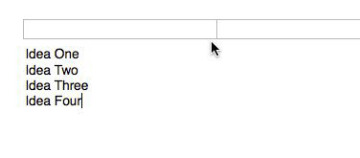
Figure 1. Each idea is on a separate line, created by pressing Enter/Return.
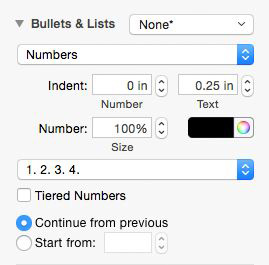
Figure 2. Use the Text Inspector to format bullets and lists.
With numbered lists, drag the item number if you need to rearrange your ideas. Figure 3 shows a numbered item in the process of being moved to reorganize the content. After you drop a numbered item where you want it, Pages instantly renumbers the list, as shown in Figure 4. With this feature, you never have to correct item numbers manually after changing the sequence. Add ideas as they come along, without worrying about their hierarchy, because using the Bullets & Lists options allows for speedy re-sequencing.

Figure 3. Re-sequence bullets and lists by dragging the number or bullet. (Notice the position of the cursor in this image.)

Figure 4. Idea Three is now listed as item 2. You can re-sequence whole paragraphs with multiple sentences this way.
Tip 3: Apply style sheets to take advantage of automated formatting
Whether you're working in Pages, Numbers, or Keynote, applying a title, heading, or body style gives you an efficient way to reformat text in long documents. In Pages, using styles enables you to build a Table of Contents that automatically adds page numbers and updates them as your document grows and changes.
Figure 5 shows the Section paragraph style being applied to a main heading in a document in progress. The Chapter paragraph style has already been applied to the headings "Origin Of The Spitfire" and "The Design Fight."
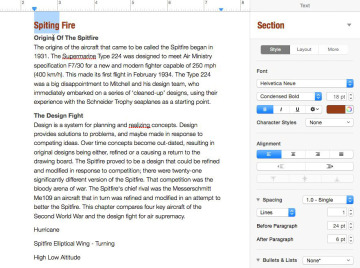
Figure 5. Applying styles is essential for using Pages efficiently.
To create a Table of Contents by using the paragraph styles in Pages, choose Insert > Table of Contents > Document (or choose Section, or To Next Occurrence). In Figure 6, the Table of Contents Inspector shows the Section and Chapter styles selected. All items tagged with the appropriate paragraph styles appear in the Table of Contents with their respective page numbers.
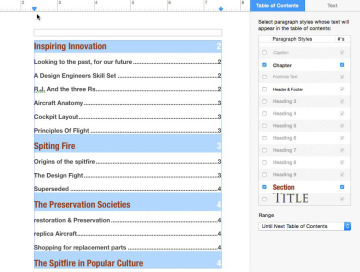
Figure 6. I created the Table of Contents by using the Section and Chapter paragraph styles, which are selected in the Inspector.
Tip 4: Don't be afraid to cram Pages documents with photos and movies
Because Pages, Numbers, and Keynote connect to Apple core technologies for handling audio, video, and images, any media you add to a project is processed quickly. Even if you illustrate a Pages document lavishly, you won't suffer lags as you scroll and edit. Adding video may seem at odds with word processing and page layout, but Pages creates ePUB files that play audio and video.
The downside of using lots of media is the bloating of document file size; however, Apple handles this issue with a neat function that reduces file size—a topic covered in Tip 7.
Tip 5: Consider placing graphics and images inline
When you place graphics, movies, or photographs in your documents, Pages automatically sets them to move with their accompanying text. If you add new content, any images already in the document move with their text by default. That sounds obvious, but you need to pay attention to the positioning of the image's anchor point. Let's look at an example.
In Figure 7, take note of the blue icon (a vertical line topped with a dot) after the period at the end of the text paragraph. That icon is the anchor point for the image selected below the paragraph.
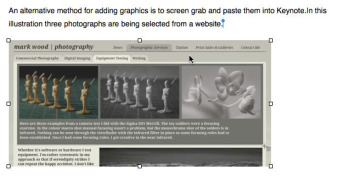
Figure 7. Anchor points are important when setting images to move with the text.
When Move with Text is selected under Object Placement in the Inspector (see Figure 8), the image can be repositioned, and its anchor point will move respectively.
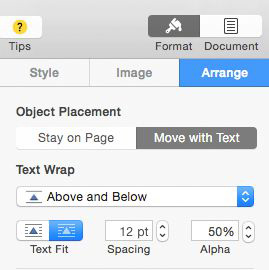
Figure 8. The Move with Text option, along with the Text Wrap set to Above and Below, keep objects in position with the relevant text.
By selecting appropriate Text Wrap options, you can achieve a pleasing page design. However, if you're writing a manuscript where you need to make sure that illustrations will not lose their relative positions in the body of text, choose the Inline with Text setting for the Text Wrap option (see Figure 9). Inline with Text is ideal for documents that will be converted to ePUB format—something Pages does with ease. Lesson 7, "Creating Rich Media ePUBs," in Apple Pro Training Series: Pages, Numbers, and Keynote covers the creation of ePUBs and further illustrates the significance of placing objects inline with the text.
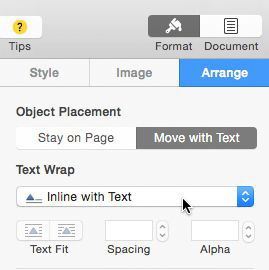
Figure 9. The Inline with Text setting is a very reliable way to make sure an object doesn't move away from its position relative to related text.
Tip 6: Use object masters to repeat objects on each page of a section
If you've ever wanted to display a logo or watermark on every page of a long document, the thought of having to paste that graphic onto every single page is probably unappealing. Pages offers a neat solution to this problem.
Figure 10 shows a logo used as a watermark. Here I set the document's layer order to position the watermark underneath the text, and I lowered the logo's opacity. I made both the layer and opacity changes in the Style and Arrange Inspector.
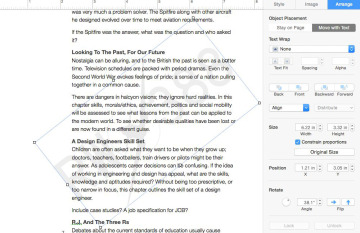
Figure 10. Using the Inspector, position the logo and lower its opacity.
To give every page of the document this look, I selected the watermark and then chose Arrange > Section Masters > Move Object to Section Master. In the Style and Arrange Inspector, I set up the look and options I wanted (see Figure 11).
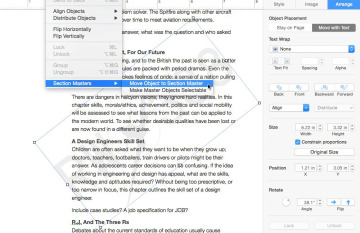
Figure 11. With the logo selected, use the Arrange menu to move it to the Section Master.
The watermark now appears on every page of the specified section of the document. (Unless you add extra sections, a Pages document has only one section.)
Tip 7: Don't optimize media in a working document
Tip 4 suggests that you can safely fill a document with media. However, a media-heavy document in Pages, Numbers, or Keynote will have a large file size. You could optimize the document by using the Reduce File Size command, but you shouldn't optimize a working document. Why not? Once a document is optimized, you won't be able to enlarge pictures in the document without losing image quality. To prevent this problem, copy the document and optimize the copy by choosing File > Advanced > Reduce File Size.
Tip 8: Save long-term Pages documents in Microsoft Word format
Who isn't busy? You may only be able to revisit your novel, thesis, or other project every year or so. With long-term Pages projects, save a copy of your document in Microsoft Word format. Apple's iWork applications offer limited backward compatibility. If you started your magnum opus in iWork '08, you won't be able to open that document in Pages 5.5 unless you first open and save it via iWork '09 (see Figure 12).
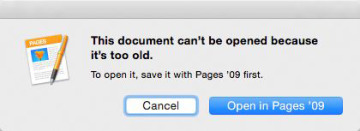
Figure 12. Pages isn't afraid to 'tell it like it is.'
To avoid facing the dilemma of trying to migrate Pages documents that have gathered digital dust, save a copy of each document in Microsoft Word format. This technique will preserve your style sheets and pretty much guarantee you'll be able to access your work for years to come. Pages can export documents in two Word formats; for the greatest compatibility, choose the DOC format.
Tip 9: Use Page Layout mode carefully
The Page Layout mode in Pages is best reserved for working with single-sheet design or multiple-page documents where the text doesn't flow across several pages. Creating posters, brochures, and newsletters in Pages is pretty straightforward; I cover it in Lesson 6, "Building Promotional Materials," in Apple Pro Training Series: Pages, Numbers, and Keynote. Working in Page Layout mode offers the easiest way to position text and graphics, as its name suggests; however, Pages 5.5 doesn't offer a method in Page Layout mode for flowing text across several pages. If you try to convert a complex document to Page Layout mode, you'll receive a fair warning of what will be lost (see Figure 13).
The newsletter templates in Pages are all set in Word Processing mode.

Figure 13. Pages gives a fair warning when converting to Page Layout.
Tip 10: Working with reviewers? Track changes and choose formats wisely
Pages can flag spelling and grammar issues, but a fresh perspective on your work can be just as helpful and more revealing. If you use track changes in Pages, any comments or changes a reviewer makes to your work will be marked for your attention (see Figure 14).
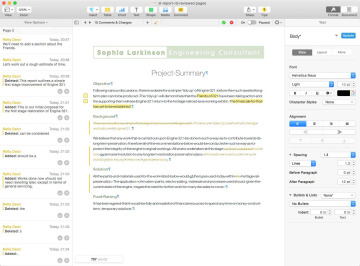
Figure 14. Pages shows markup very clearly when Track Changes is enabled. The Comments and Changes pane is visible to the left of the document.
If your reviewers use Microsoft Word on a Mac or PC, you can enable track changes and add notes in Pages before exporting the document to Word format. Then reviewers will be able to see your markup and add their own, which will convert easily to Pages. Any changes are tracked from Word back to Pages and vice versa. One caveat, however: The appearance of the document might change in translation from Pages to Word. When you need a review of design and layout, save the Pages document in Portable Document Format (PDF), which preserves layout. Any markup or comments in the PDF must be done via a PDF reader application, such as Apple Preview or Adobe Acrobat.
Conclusion
We've concluded our brief look at Pages. All these topics are explored to greater depth in exercises based on real-world scenarios in my book Apple Pro Training Series: Pages, Numbers, and Keynote. Part 2 of this series provides 10 tips for the Numbers application.